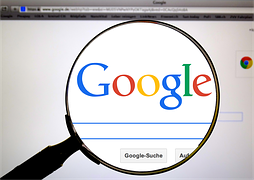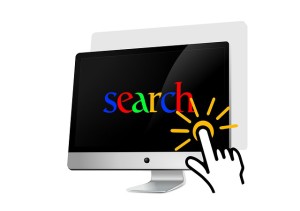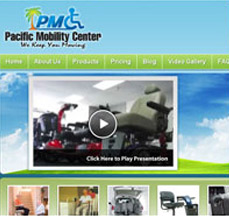The Effects of Advertising
Advertising is a form of marketing communication used to promote or sell something, usually a business’s product or service, but it can be almost anything that one individual wants to exchange with another in return for money or some other commodity or service. It is said that the practice of advertising began millennia ago – commercial messages and political displays have been found in the ruins of Pompeii and ancient Arabia, as well as on ancient wall paintings in Asia, Africa, and South America. The first printed advertisement in English appeared in 1477, the year after William Caxton set up his first press in England. By the middle of the 17th century, British newspapers had adopted advertising as an intrinsic part of their contents. The first daily newspaper in the American colonies devoted as many as ten of its sixteen newspaper columns to advertising.
The “Father of modern advertising” is purported to be one Thomas J. Barrett, a 19th century Londoner, who created an effective advertising campaign for the Pears Soap Company which involved the use of targeted slogans, images, and phrases. “Good morning. Have you used Pears’ Soap?” was famous in its day and well into the 20th century. Barrett introduced many of the crucial ideas that lie behind successful advertising. He constantly stressed the importance of a strong and exclusive brand image for Pears and of emphasizing the product’s availability through saturation campaigns. He also understood the importance of constantly reevaluating the market for changing tastes and mores, stating in 1907 that “tastes change, fashions change, and the advertiser has to change with them.”
As America became more industrialized, especially from the 1880s to the 1920s, mass-appeal advertising paralleled the mass production of goods. Most advertising during this period focused on the products being made – their construction, performance, uses, prices, advantages, etc. Product-information advertising’s aim is to familiarize the consumer with brands as well as to introduce new products by educating the general public as to their purposes. And at its best, this type of advertising helps inform the public in a dispassionate and helpful way.
After the 1920s, advertisers in the U.S. adopted the doctrine that human instincts could be targeted and harnessed, or “sublimated” into the desire to purchase commodities. Product-information advertising was replaced by a model that stressed product imagery and personality. These early purveyors of modern advertising understood that the most powerful effect of an advertisement was the good feelings it could create by surrounding a product with other things that people liked. Its contemporary version can be found in the advertisements that proclaim, for example, that: “Love – It’s what makes a Subaru, a Subaru.” In other words, the point of advertising became the manipulation of emotion, rather than a method of informing the public about a product’s uses, performance, and advantages. This dynamic, called “affective conditioning,” has been clinically proven to work time and again. Edward Bernays, a nephew of Sigmund Freud, became associated with the method and is sometimes called the “Founder of modern advertising and public relations.”
Today, advertising pervades society via a plethora of media. Ads in newspapers, magazines, billboards, radio, television, the internet, direct mail, etc., constantly bombard the modern consumer with an endless array of messages, pushing them to buy an almost infinite assortment of products. While back in the 1970s, the average American was exposed to about 500 ads a day, in 2015, the number was closer to 5000 – with one full hour of ads witnessed every day on TV, alone.
While everyone admits that advertising is a necessary part of each and every business, and that the there is a realm of advertising, such as public service announcements that help market a social concept of importance to the general public, it is just as certain that the overabundance of advertising, as well as its pervasiveness, may also be causing enormous social damage. Advertising, as Bernays understood, plays with our emotions. It encourages us to believe that buying things is the ultimate goal of life, and it conflates important human feelings with non-sentient objects. For example, does anyone really believe that love is what makes a Subaru a Subaru, and not metal, rubber, and plastic? Of course not.
But even though we realize, intellectually, that that notion is ultimately untrue, our emotional selves prompt us to go out and buy a Subaru because we’ve been tricked into thinking that we’re purchasing the love and not the metal, rubber, and plastic. Thus, advertising promotes mindless consumption, as the majority of modern ads try to convince us that the products we buy will bring us the happiness we seek. But it’s a never-ending and habitual cycle that leads to more, not less, discontent, as we amass more and more stuff but continue to remain unsatisfied.
Now, as more and more advertising becomes web-based, we become even more targeted by advertisers who know more and more about our preferences and habits, and thus have more sophisticated insight into which buttons they need to push to further induce us to purchase even more things we may not actually need.
At its worst, advertising has come to dominate our culture, transforming our society into a materialistic one, where the purchasing of products becomes our raison d’être. In its most egregious form, it has virtually replaced political discourse with mass marketing strategies, so that even the selection of our political leaders is now guided by the same emotional and mindless process by which advertisers sell their commodities.
While advertising may be said to provide many benefits, including the stimulation and development of new and better products; holding down prices; encouraging competition; subsidizing the media; and providing the dissemination of information for health and social issues, as well as products; over the course of the last century, modern advertising has also morphed into a ubiquitous dynamic that has helped to distort human values, devolving our citizenry into nothing more than consumers of manufactured goods, solely for the profit of giant, soulless, corporate entities.
 1-844-47-Click (1-844-472-5425)
1-844-47-Click (1-844-472-5425)






